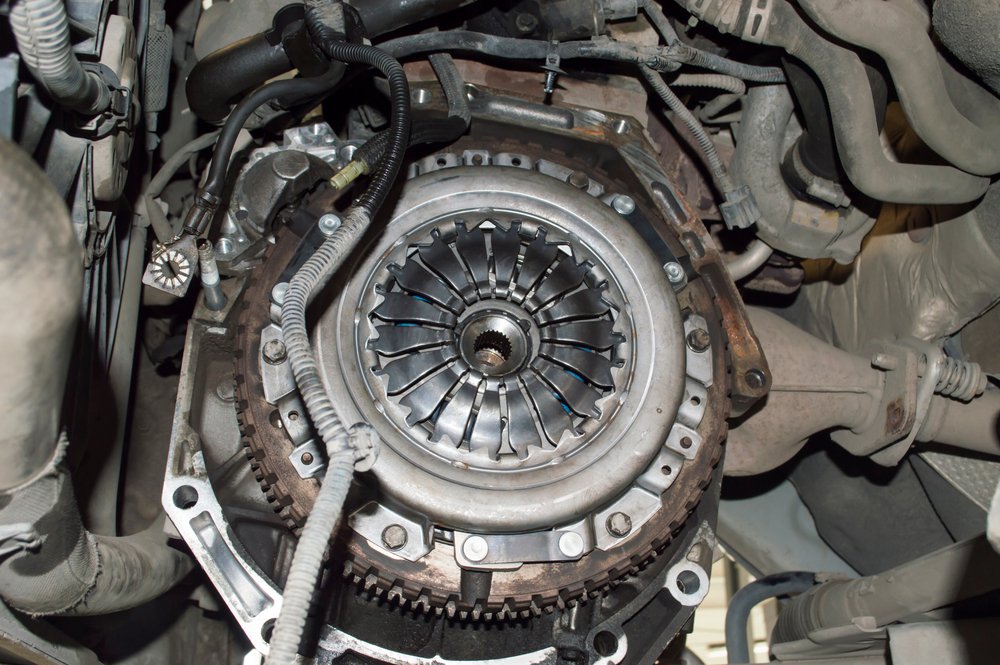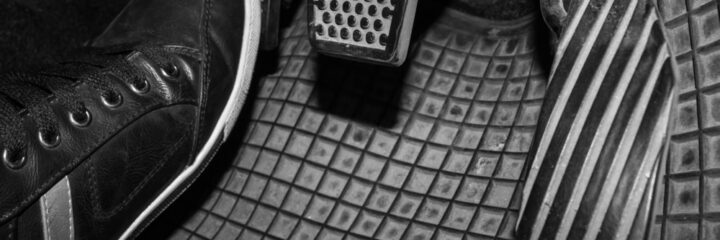If you drive a car with a manual transmission, you want your clutch to work flawlessly. When you disengage the motor, it needs to happen smoothly, or it can destroy your driving experience. Clutches that slip instead are annoying or downright dangerous. If you are experiencing some clutch slippage, it may be an easy fix.
This article is about adjusting the clutch if it is out of tolerance. We’ll tell you how to check if the clutch needs any adjustment first, then break down the different types of clutch adjustment systems. Finally, we’ll give you some options on how to adjust it yourself, or if you should take it to a mechanic instead.
Why the Pedal Needs Adjustment
Most clutches are operated by either a cable or hydraulics. These mechanisms wear out over time. For instance, the cable can stretch, the springs operating the hydraulic pistons can weaken, and the clutch itself wears down over time, requiring more pressure.
When these items wear out, it creates what we call “freeplay” in the clutch. The freeplay tolerance is checked periodically as outlined in a car’s maintenance schedule in an ideal world. In the real world, however, most people don’t think about clutch adjustment until something starts to go wrong.
There are two main ways you’ll be able to tell that your clutch needs adjusting.
The Engine Doesn’t Fully Engage
The most common problem that can occur when you have too much freeplay is slipping. A transmission that slips doesn’t receive all of the power from the motor, and therefore power is lost between the motor and the wheels.
Literally speaking, the friction disc of the clutch is slipping against the flywheel of the motor instead of transferring all the power.
There are a few symptoms of a slipping clutch.
- The engine RPMs climb while in gear, but you don’t go faster.
- The clutch pedal moves while the car is in gear.
- The clutch pedal behaves inconsistently.
The Engine Doesn’t Fully Disengage
If the clutch pedal is too far out of adjustment in the other direction, it will make it so that the clutch can’t fully disengage the motor from the transmission. The throwout bearing needs to be able to fully press against the springs so that the clutch can pull away enough to stop power from being transferred.
This can make shifting difficult or impossible. You will notice it most when trying to start moving. The car may try to move the moment you move the gear lever into first even if the clutch is depressed, and the engine will bog down and quit.
This symptom of an improperly adjusted clutch is a bit more serious, but fortunately, it’s much less common.
Is Driving With an Improperly Adjusted Clutch Dangerous?
Under normal circumstances, it’s not dangerous to drive with a poorly adjusted clutch. It can be very annoying since the performance of your car is decreased, but you aren’t likely to have any serious complications on the road.
The bigger danger is to the clutch itself. Excessive slipping will cause the friction disc to wear down a lot faster. If it fails, you will be completely clutchless, and then you won’t be able to drive at all.
Clutches wear down very slowly, though, so you will have plenty of time to notice other problems before they fail completely. You can check this webpage for a complete list of symptoms if you suspect your clutch is going bad.
Types of Clutch Adjustments
There are two types of clutch systems found on most cars today. There are other types of clutches, like electronically actuated clutches or hybrid clutches, but those are fairly rare and will require specialized service.
Self-Adjusting Clutches
Many modern cars come with self-adjusting clutches. These are hydraulic clutches that use springs to keep tolerances in check.
However, just because they are self-adjusting, that doesn’t mean they never require service. The automatic adjustments only have a certain amount of total adjustment, and in some cases, your clutch can exceed that total adjustment.
Fortunately, these are usually very easy to adjust if you need to. The actual process varies by make and model, but many vehicles simply have a nut that needs to be turned near the pedal itself.
Manual Cable Adjustments
Older cars will have a clutch that is actuated by a cable that is connected directly to the pedal. That gives you two different places that the clutch can be adjusted.
Pedal Adjustment
Most vehicles will have a simple nut and bolt adjustment system that is located behind the clutch pedal itself.
The cable is attached to a long, threaded metal piece. By tightening the nuts on that threaded piece, it shortens the cable. When the cable is shortened, the clutch engages shorter.
Under Hood Adjustment
If you reach the end of the pedal’s adjustment but still need the clutch to engage sooner, then you’ll have to find the other end of the clutch cable.
On many cars, the other end of the cable will be attached to a lever on the clutch cylinder. Clutch cylinders often have a variety of adjustment points built-in, and you’ll need to read the manual to find out how to properly adjust everything.
On some much older cars and motorcycles, the clutch cable will be connected directly to the clutch. That attachment point will have another threaded rod just like the part behind the pedal and can be adjusted the same way.
How to Adjust the Clutch

If you need to adjust your clutch, you have two options. The first option is to do it yourself. On most cars, adjusting a clutch only requires a few hand tools and an hour or so of time. You don’t need any extra space or specialized tools, so you can save a bit of money compared to the second option, which is to take it to a mechanic.
Doing It Yourself
There are two main steps when adjusting the clutch yourself. Both steps are easier to do if you have a friend to help, so if you can, rope a buddy into giving you a hand.
Measure the Amount of Free Play
Measuring the freeplay can be a little bit of a challenge. You may need to refer to your car’s user manual to find out how to accurately measure the amount of play and find out what it should be.
The simplest way to measure the freeplay is to have a friend measure the clutch pedal at various points. This will work with most cars, but you will still need to find out what the amount of free play should be.
- Measure the distance from the clutch pedal to the firewall and write it down.
- Have a friend press the clutch pedal in until it begins to engage.
- Measure the distance from the catch point to the firewall and write it down.
- Have your friend press the clutch all the way.
- Make sure the clutch pedal touches the firewall. If it doesn’t, measure the distance and subtract it from the first two measurements.
- Do this three or four times to make sure you have consistent measurements.
The distance between the clutch pedal when it’s not being pressed and the catch point is the amount of free play. It should be about ¼”. The manual will also give measurements for the total height and total throw, so you can check all the measurements.
You can see the measurement process in this video if you prefer seeing it rather than reading about it.
Adjusting the Clutch
Most clutches can be adjusted with the following tools.
- An open end wrench set.
- An adjustable wrench
- A screwdriver set
You will have to refer to your owner’s manual for the specific process used to adjust your clutch. You can refer to our previous section on types for a general overview and keep the following tips in mind when you begin.
- Make small adjustments instead of large adjustments
- Label anything you have to remove
- Check for damaged components as you work
- Inspect other areas around the pedal that don’t often get seen
Taking Your Car In
Any shop that works on cars will be able to adjust the clutch for you. It usually isn’t even an expensive process; you can expect to pay for an hour of shop time, and that’s it. In many areas, that can be as little as $50.
The way to get the best deal, though, is to simply have the shop adjust the clutch when they are doing other maintenance. That will add a very nominal cost to the total cost of the service, especially if they are already working under the hood.
You may want to have a shop adjust your clutch even if you have the time and tools, too. A mechanic can look up the proper adjustment numbers and know exactly how to make your car feel best.
Don’t Let Performance Slip By
A slipping clutch can cause costly problems in the long run and reduce the amount of power you have to work with at any time. Suppose you have ever tried to accelerate onto a highway during rush hour and not been able to make it up to speed in time. In that case, you know exactly how frustrating that can be.
We hope this article helps you avoid that problem by teaching you how to check for clutch adjustment issues and inspires you to get the issue fixed.


